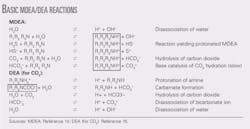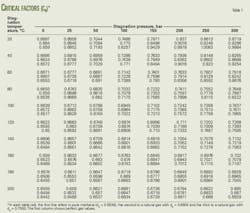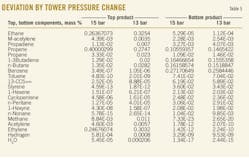China is moving quickly on construction of its Phase II strategic petroleum reserve and FACTS Global Energy believes most SPR Phase II sites will come on stream by 2012-13, doubling China's SPR capacity. China will also expand commercial crude storage capacity by about 18 million cu m (about 113 million bbl) by end 2012.
As a market with huge growth potential, China has also attracted interest in its crude storage business from foreign companies. But barriers for foreign investment in the crude oil storage business, however, still exist.
The rapid expansion of Chinese crude oil storage capability, coupled with the robust growth in oil demand, will substantially increase China's demand for crude imports.
China became the world's second largest crude oil importer in 2009 and is set to import even more crude in the future to feed its rapidly expanding refining sector in the face of stagnant domestic production growth. The increased imports have prompted expansion of crude storage facilities, both strategic and commercial.
Storage capacity and flow of crude in and out of storage facilities have become one of the major factors in determining China's demand for imported oil. As a market with huge growth potential, China has also attracted investment interest in its crude storage business from foreign companies.
This article updates developments in China's strategic petroleum reserve and commercial crude storage since 2009 (OGJ, Sept. 21, 2009, p 64).
China's SPR
Fig. 1 shows the time line of China's SPR program, the primary goal of which is to reduce the impact of potential crude oil supply disruptions. China officially formalized the SPR program in the 10th Five-Year Program in 2001 and construction started on the 5.8 million cu m Zhenhai base 3 years later, completing SPR Phase I with a total capacity of 16.4 million cu m in 2008.
China is currently building the Phase II sites and aims to have them completed by 2012-13, with total planned storage capacity of 26.8 million cu m. China aims to complete Phase III by 2015-16, bringing total SPR to about 80 million cu m.
The National Petroleum Reserve Center, established in December 2007, runs China's SPRs under supervision of the National Energy Administration, which is under the National Development and Reform Commissions. The NDRC manages policy and planning of the SPRs.
NEA administrator Zhang Guobao is also one of nine NDRC vice-chairmen. The NPRC organizes reserve base construction, procures oil, and makes use and turnover decisions. During Phase I, CNPC-PetroChina, Sinopec, and Sinochem were responsible for facilities construction, maintenance, and reserve site filling, implemented on behalf of the NPRC.
Fig. 2 and Tables 1 and 2 provide details of the SPR sites.
Phase I sites
Zhenhai, Zhoushan, Huangdao, and Dalian are the sites for China's SPR Phase I. Construction began in 2004 and was completed at the end of 2008. All four sites are aboveground, located in the coastal cities, and near refining centers. Filling was completed in March-April 2009 and Zhang told the media in June 2009 the average crude price for SPR Phase I purchases was $58/bbl, implying the government has approached crude purchases strategically and purchased when it perceived prices to be low. FGE believes about 40 million bbl of crude was purchased August 2006-June 2007 and about 60 million bbl October 2008-April 2009.
Phase II sites
Under NDRC's plan for Phase II, China will build eight strategic stockpiling bases with a total capacity of 26.8 million cu m. Table 2 indentifies potential sites for NDRC's SPR Phase II list. Some of the identified sites may be on the Phase III list instead. It is also possible NDRC may decide to expand existing Phase I sites.
While the four Phase I sites are at important coastal ports and aboveground, the NDRC has shifted focus in selecting the Phase II sites to inland provinces with access to various crude pipelines from the international Kazakhstan-China, Russia-China, and maybe Myanmar-China crude pipelines (Fig. 2). The NDRC is also conducting feasibility studies for several underground sites.
The government will likely allow some flexibility in operating the SPR sites and may be experimenting with different methods of running the program as a whole. Evidence exists China has actually allowed crude from the initial four Phase I sites to be drawn and refilled.
The NDRC could divide China's SPRs into three categories: truly national SPRs, commercial storage by state oil companies, and commercial storage by local government or private companies. In early June 2010 the NPRC announced it will rent crude storage facilities for 2 years at a rate of $2.50/cu m/month from six companies to stockpile crudes in Shandong and Zhejiang.
The contracts would prohibit commercial use of the crude during the 2 years, unless authorized by the Chinese State Council. CNOOC will import crudes for the six companies and is reported to be stockpiling a total of 1.5 million tonnes of crudes at the rented storage facilities, which could be filled by end-2010.
Fig. 3 provides an estimate of the 2006-16 capacity build in China's SPR. A relatively small 2 million cu m will come on line this year. The three new sites (Lanzhou, Dushanzi, and Caofeidian) with total capacity of 11 million cu m will come on line in 2011. While four more sites (Jinzhou, Tianjin, Huizhou, and Hainan) with total capacity of 15 million cu m will come on line in 2012.
Similar to the filling of Phase I sites, NPRC will approach crude purchases for the Phase II sites strategically and only buy when it perceives prices to be low. Of the SPR Phase II sites, only part of the Shanshan Xinjiang site (1.0 million cu m) finished construction in early 2009, with all other sites still under construction or in feasibility study. The lack of much new capacity suggests that since mid-2009 only a small amount of crude was imported for the SPR program, even assuming the 1 million cu m was filled immediately upon completion.
China will import 1.5 million tonnes in second-half 2010 to fill the crude tanks leased by the NPRC. More sites will start to come on-stream from end-2010 onwards, potentially pushing demand for SPR injection to 80,000-200,000 from 2011-17. The exact amount for a specific year will depend largely on crude price.
Commercial storage
At the start of 2010, China had at least 49.5 million cu m of storage capacity for crude oil, of which Sinopec owns nearly half. CNPC-PetroChina owns around 43% and CNOOC-Sinochem and others the last 7% (Fig. 4). Overall average utilization of the crude storage facilities is about 65%.
FGE's base-case scenario projects China's crude imports reaching 6.9 million b/d by 2015 and 9.2 million b/d in 2020. China will also add a net 2.1 million b/d of refining capacity from beginning-2010 to end-2015 and 2.8 million b/d from beginning-2016 to end-2020, bringing total refining capacity in China to 15.6 million b/d.
This expansion of crude imports and refining capacity has prompted China to expand its commercial crude storage. Current construction plans will have commercial crude storage capacity reach an estimated 68 million cu m by end-2012, up 18 million cu m (37%) from end-2009 (Fig. 5). About 90% of the new additions are by Sinopec or PetroChina for their own use. Tables 3 and 4 show the main crude storage tanks either under construction or planned.
China has completed the 300,000 b/d China-Russian crude pipeline and is also expanding the China-Kazakhstan crude pipeline to 400,000 b/d from 200,000 b/d and building the China-Myanmar crude pipeline. CNPC-PetroChina is building large commercial crude oil storage sites along these routes (Table 3).
The design of many new Chinese refineries will allow them to process Middle Eastern crudes. Sinopec and PetroChina have launched or are building several large crude terminals in coastal cities (Tianjin, Dalian, Huangdao, Shandong Rizhao, Ningbo, Zhoushan, Huizhou, Maoming, Fujian, Guangxi, etc.), capable of accommodating 300,000-dwt very large crude carriers from Middle Eastern countries. Construction includes large commercial crude storage in many of those coastal cities.
Crude oil storage remains under the strict control of Chinese state-owned companies (Sinopec, PetroChina, Sinochem, and CNOOC). Only two other companies (Shandong Long Kou Bingang Port Ltd. and Laizhou Oriental Ltd.) hold crude storage operating licenses from the Ministry of Commerce (MOFCOM).
China currently has five bonded crude storage sites (Table 5): Sinochem's Zhoushan and Zhenhai; PetroChina-Dalian Port Group's Dalian; PetroChina's Qinzhou; and Penglai Anbang Port Group's Penglai Shandong. These bonded facilities can lease their storage space to foreign companies for transiting their crudes through China. FGE expects more bonded crude oil storage by Sinopec or PetroChina to come on stream.
MOFCOM formally released the Manual of Guidance for Crude Oil Business in March 2007, detailing procedures for conducting crude oil storage business in China, including the application and approval processes. The manual allows foreign investment, but crude import remains subject to state control and crudes still have to enter the country through one of five state-owned crude traders, the Zhenhua Co., or a few explicitly named small crude-trading companies before entering Chinese refineries. Sinopec and PetroChina are also determined to build their own distribution infrastructure, sharply limiting foreign investment in the crude storage business despite it being allowed.
Vopak is on the way to becoming the first foreign company to build and operate a large crude oil storage facility in Hainan. It publicly announced forming a joint venture with China State Development and Investment Corp. to build and manage a 5 million cu m storage site in Yangpu Island, Hainan province in mid-2009. Construction of the site had not started yet as of May 2010, but Vopak plans to complete construction by 2013. If Vopak's project goes well, FGE expects the Chinese government to welcome more foreign investment into the crude storage business.
The authors
More Oil & Gas Journal Current Issue Articles
More Oil & Gas Journal Archives Issue Articles
View Oil and Gas Articles on PennEnergy.com












